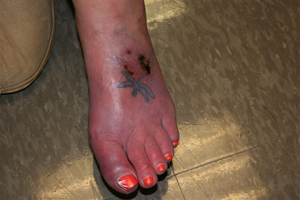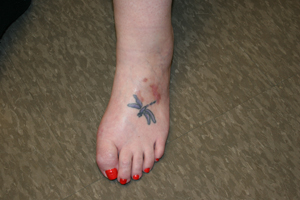Health
September is National Peripheral Arterial Disease Awareness Month
Submitted by Cardiovascular Institute of the South
HOUMA— Do you experience pain or cramps in your legs and feet? These symptoms may not only be caused by increasing age; they may be signs of a much more serious condition called peripheral arterial disease, also known as PAD. One in 20 Americans over the age of 50 has PAD, but many do not experience symptoms or know of the disease. PAD is a common and treatable disease, but it is often unrecognized, and its main symptom of leg pain is typically considered an inevitable consequence of aging. That’s why Cardiovascular Institute of the South is raising awareness for PAD, especially during September, which is known as National PAD Awareness Month.
Peripheral arterial disease is caused by plaque build-up or blockages in an area of the body outside of the heart such as the legs, neck or arms. The blockages keep extremities and organs from receiving oxygen-rich blood. And just like clogged arteries in the heart, blocked arteries in the legs raises the risk of cardiovascular events, such as heart attacks and strokes. Ultimately, PAD can reduce mobility and be fatal if left untreated.
PAD can affect anyone at any age—just ask 28-year-old Angela Mullins. Mullins, from Ocean Springs, Mississippi, is one of nearly 12 million Americans who suffer from peripheral arterial disease.
Mullins first noticed signs of PAD as a teenager while on vacation with her family. She experienced trouble walking, and the pain continued after the trip. Doctors treated her for tendinitis and inflammation, but her condition did not improve. One night after wearing high heels, her feet developed ulcers that would not heal, and after several more doctors and treatments, her condition still worsened. At age 21, Mullins was finally diagnosed with PAD and was told she had blockages behind both of her knees. She underwent bypass surgery on both legs which gave her some relief but did not eliminate the pain. Following her surgery, she returned to nursing school and became a practicing nurse.
In 2011, Mullins took an airplane trip to visit family, and when she returned, her left foot was purple. She again noticed ulcers and severe discoloration on her feet, as she had had before her surgery. “The pain was so unbearable, I could only sleep 30 minutes at a time before the pain woke me up,” explained Mullins. “I couldn’t work or spend time at my son’s school activities.”
Mullins learned that both of her legs were blocked and her left leg had no blood flow. She went through another round appointments and treatments, but nothing seemed to help. “I was told that the only way to save my life was to amputate both of my legs,” she said. “My family and I could not believe that amputation was the only answer, so in an effort to save my legs, I visited many doctors until I was referred to Cardiovascular Institute of the South in south Louisiana.”
After Dr. Craig Walker, Founder, President and Medical Director at Cardiovascular Institute of the South (CIS) performed a series of three laser treatments on her legs last fall, Mullins felt great and began walking two miles a day. She now can get around easily and does not experience any pain.
“I have gone back to work and can once again spend time with my son at school,” said Angela. “I can even do things that I could not do right after my bypass surgery. I feel like I have my life back!
Many people lose limbs each year due to peripheral arterial blockage, but CIS believes that early diagnosis and treatment can prevent disability and save limbs and lives. CIS has extensive experience in interventional procedures to save limbs.
Symptoms of PAD include:
- open ulcer/wound on the bottom of your foot that does not heal
- pain in the feet or legs that goes away with walking
- severe cramping in your calf after exercising that goes away immediately when stopping
- discoloration of the legs/feet
- numbness or coldness in legs/feet
- pale, shiny skin
PAD is caused by the same risk factors that lead to heart disease. Those at risk include anyone over the age of 50, especially African Americans; those who smoke or have smoked; and those who have diabetes, high blood pressure, high blood cholesterol or a personal or family history of vascular disease, heart attack, or stroke.
A simple, painless ultrasound can test the blood flow in your legs to determine your risk of PAD. Consult with your doctor if you think you may be at risk.
CIS is one of the most respected groups of cardiologists, representing nearly every specialty in heart and circulatory medicine. With a team of nearly 500 dedicated members, CIS serves communities throughout Louisiana, as well as national and international patients, at its 13 clinics. CIS consistently positions itself at the forefront of technology by providing the most up-to-date technology coupled with compassionate care. This mission has guided the institute for more than 29 years of service to south Louisiana. For more information about CIS, call 1-800-425-2565 or visit www.cardio.com.




0 comments